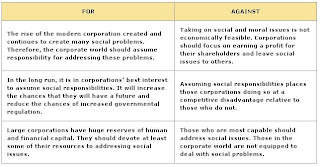Diesel price decontrol issue
Acting on the Vijay Kelkar Committee
recommendations, the UPA government has allowed the oil marketing
companies to raise diesel prices from time to time till the pump price
matches the market rate, which means wiping out the entire Rs 9.60 a
litre subsidy on diesel, possibly in the next 10 months. Last September
the government hiked the diesel price by Rs 5.63 a litre and invited
protests. This time the price hike is in phases and is accompanied by
some relief on cooking gas. The NDA government had decontrolled diesel
prices in 2002 but buried the policy before the general election.
Why is the UPA government doing it so close to the elections? There are strong financial reasons. By selling oil below the cost price, the three government oil marketing companies have shown a combined operating loss of Rs 1,66,800 crore. By continuing with the existing subsidies, especially on oil, the government’s finances may go haywire, resulting in a possible rating downgrade and capital outflows. This would hurt investor sentiment and growth. Last March the fiscal deficit was an unacceptable 5.75 per cent of the GDP. Efforts are now on to bring it to 5.3 per cent. The UPA government decontrolled petrol prices in 2010 but largely on paper and left diesel untouched, fearing a political backlash. The Prime Minister has often stressed on aligning energy prices with global trends. The government has now taken the plunge.
Money saved by cutting subsidises can be ploughed into education, health and infrastructure, which are priority areas. The diesel/petrol price mismatch has led to higher sales of luxury cars and SUVs. Bulk diesel users will now have to pay market rates. Costlier diesel may push up prices of goods in the short run. Ultimately, inflation is expected to fall as the calibrated price hike may be absorbed by the economy, fiscal deficit may come under control and the RBI may start lowering interest rates. Countries like the US, Germany, the Philippines, Japan and China, which have deregulated diesel prices, have low inflation of 1 to 2 per cent.
=====================================================================================
BofA-ML said the recent partial diesel price hike will inflict a 1.20 per cent burden on the already sticky inflation and that the price index will remain elevated throughout the next fiscal.
However, on the positive side, the price hike will help the government trim its oil subsidy by Rs 20,000 crore to Rs 67,300 crore (assuming a rupee value of 54 to the dollar).
Why is the UPA government doing it so close to the elections? There are strong financial reasons. By selling oil below the cost price, the three government oil marketing companies have shown a combined operating loss of Rs 1,66,800 crore. By continuing with the existing subsidies, especially on oil, the government’s finances may go haywire, resulting in a possible rating downgrade and capital outflows. This would hurt investor sentiment and growth. Last March the fiscal deficit was an unacceptable 5.75 per cent of the GDP. Efforts are now on to bring it to 5.3 per cent. The UPA government decontrolled petrol prices in 2010 but largely on paper and left diesel untouched, fearing a political backlash. The Prime Minister has often stressed on aligning energy prices with global trends. The government has now taken the plunge.
Money saved by cutting subsidises can be ploughed into education, health and infrastructure, which are priority areas. The diesel/petrol price mismatch has led to higher sales of luxury cars and SUVs. Bulk diesel users will now have to pay market rates. Costlier diesel may push up prices of goods in the short run. Ultimately, inflation is expected to fall as the calibrated price hike may be absorbed by the economy, fiscal deficit may come under control and the RBI may start lowering interest rates. Countries like the US, Germany, the Philippines, Japan and China, which have deregulated diesel prices, have low inflation of 1 to 2 per cent.
=====================================================================================
BofA-ML said the recent partial diesel price hike will inflict a 1.20 per cent burden on the already sticky inflation and that the price index will remain elevated throughout the next fiscal.
However, on the positive side, the price hike will help the government trim its oil subsidy by Rs 20,000 crore to Rs 67,300 crore (assuming a rupee value of 54 to the dollar).
However, BofA-ML said it continues to expect the Reserve Bank to cut policy rates by 25 bps on January 29. It is likely to be cut by 75 bps by June, then pause in the second half as inflation picks up and cut another 50 bps again in the March 2014 quarter as inflation subsides.

Comments
Post a Comment